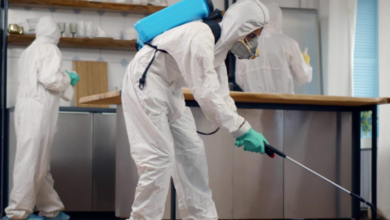How Long Does Radon Testing Take in Ottawa?

Introduction:
In the bustling city of Ottawa, home to nearly a million residents, safety and health are top priorities for homeowners. Most people are familiar with common household hazards like fire, carbon monoxide, and mold. But there’s another health threat that’s just as dangerous, yet far less understood — radon gas.
Radon is an invisible, odorless, tasteless radioactive gas that forms naturally in the soil. As it seeps into homes through foundation cracks and gaps, it can accumulate to dangerous levels, increasing the risk of lung cancer — especially when left undetected over time.
If you live in Ottawa and are concerned about your home’s radon levels, you’re likely asking: How long does radon testing take? The answer depends on the type of test, your goals, and whether you’re doing it yourself or hiring a professional.
This article will explore:
- Why radon testing is important in Ottawa
- Different types of radon tests
- How long each type takes
- When and how to test for best results
- What to do once you receive your results
Why Is Radon Testing Crucial in Ottawa?
The City’s Unique Geological Risk
Ottawa sits on a rich mix of uranium-bearing bedrock, including granite and shale. Combined with clay-heavy glacial soils and long winters, these geological conditions create ideal circumstances for radon gas to enter and become trapped in homes.
The Numbers Don’t Lie
Health Canada and local studies show that:
- Over 20% of Ottawa homes test above the safe threshold of 200 Bq/m³ (becquerels per cubic metre)
- Some neighborhoods — such as Barrhaven, Kanata, Orleans, and Greely — report readings above 1,000 Bq/m³
- Radon levels in Ottawa exceed the national average by a significant margin
With risks this high, every Ottawa homeowner should consider radon testing — and understand the timeline involved.
Understanding Radon Testing Duration
Radon testing isn’t an instant process — and that’s by design. Radon levels naturally fluctuate throughout the day, across seasons, and even from one room to another. To capture a reliable reading, testing must account for these variations.
There are two primary categories of radon testing:
TypeTypical DurationUse Case
Short-Term Test 2 to 7 days Quick screening, real estate transactions
Long-Term Test 91+ days Accurate health risk assessment
Let’s examine each type in more detail.
Short-Term Radon Testing: Fast but Limited
How Long It Takes: 2 to 7 Days
Short-term testing is designed to provide a quick snapshot of radon levels in a home. It’s often used when homeowners need rapid results, such as during:
- Home sales or purchases
- Pre-renovation inspections
- Preliminary assessments
Equipment Used
- Charcoal canisters
- Electret ion chambers
- Continuous Radon Monitors (CRMs)
DIY vs. Professional
- DIY kits require you to mail the canister to a lab after the test period (results in 1–3 weeks)
- Professionals use CRMs, providing results within 48–72 hours
Pros
- Fast turnaround
- Affordable
- Useful for screening or urgent situations
Cons
- Not as accurate due to short exposure period
- Radon levels can vary significantly day to day
- Health Canada does not recommend short-term tests for long-term health decisions
Summary
Short-term tests take 2–7 days, with results available within 1 to 3 weeks, depending on the method used.
See also: Home Removalist Sydney: Moving Day Tips for A-to-Z Success
Long-Term Radon Testing: The Gold Standard
How Long It Takes: At Least 91 Days
A long-term test measures radon levels over three or more months, offering a more accurate picture of the average exposure level. This is the method recommended by Health Canada.
Why 91 Days?
- Captures fluctuations caused by weather, ventilation, and occupancy
- Reflects real-life exposure over time
- Filters out short-lived spikes or drops in radon levels
Best Time of Year to Test
Ottawa’s cold winters mean October to April is the best window for testing. Homes are closed up, reducing fresh air circulation and giving the most realistic worst-case scenario.
Equipment Used
- Alpha track detectors: Small plastic devices that record cumulative radon exposure
- Digital long-term monitors: More expensive, but offer detailed data
DIY vs. Professional
- DIY kits cost $40–$80 and include lab analysis
- Professional long-term testing ranges from $200–$400 but includes placement, analysis, and consultation
Summary
Long-term testing takes at least 91 days, with results returned 1–3 weeks after mailing the detector to the lab.
Factors That Influence Test Duration
1. Purpose of Testing
GoalSuggested Test TypeDuration
Health assessment Long-term 91+ days
Real estate transaction Short-term 2–7 days
Post-mitigation verification Short-term or CRM 2–7 days
Seasonal monitoring Long-term Over winter
2. Location Within the Home
Place your detector in:
- Lowest occupied level (usually basement)
- A frequently used room (like a bedroom or family room)
- Away from vents, windows, and direct sunlight
Improper placement can lead to inaccurate readings, wasting your time and requiring a retest.
3. Time of Year
- Winter: Best for accurate readings
- Summer: Open windows and HVAC systems can skew results
4. DIY vs. Professional Services
DIY testing adds mailing and lab processing time. With professional services:
- Setup is quicker
- Results can be faster (especially with digital monitors)
- Expert interpretation is included
Step-by-Step Timeline for DIY Radon Testing in Ottawa
Let’s walk through a typical testing schedule using a DIY long-term kit:
Week 1
- Purchase test kit online or from a hardware store
- Read instructions and place device correctly
- Start 91-day timer
Weeks 2–13
- Leave the detector undisturbed
- Avoid moving or tampering with the device
Week 14
- Package and mail device to the certified lab
- Wait 1–3 weeks for results
Total Time: ~14–16 weeks from setup to receiving results
Timeline for Professional Radon Testing in Ottawa
Service Type Test Duration Result Turnaround
Short-term CRM test 2–7 days 1–2 business days
Long-term passive test 91+ days 1–3 weeks post-mailing
Post-mitigation verification 48–72 hours Same day or next
Certified professionals in Ottawa include:
- Radon Works
- Canadian Shield Radon
- RadonCare
- Healthy Home Center (Radon Ottawa)
These companies are C-NRPP-certified, ensuring accuracy and compliance with Health Canada standards.
What Happens After Testing?
Understanding Your Results
Level (Bq/m³)RiskAction Needed
0–99 Low No action required
100–199 Moderate Monitor; retest in future
200–600 High Mitigate within 2 years
600+ Very High Mitigate within 12 months
If Results Are High
Health Canada recommends sub-slab depressurization (SSD), a mitigation system that:
- Costs $2,000–$3,500
- Reduces radon by 90–99%
- Takes 1–2 days to install
Re-testing post-mitigation is quick — usually 2–7 days.





